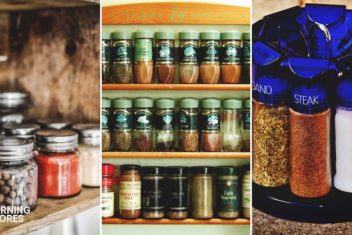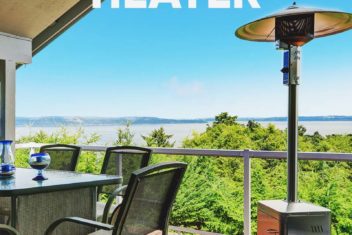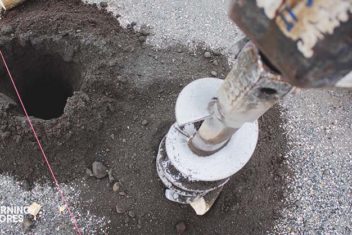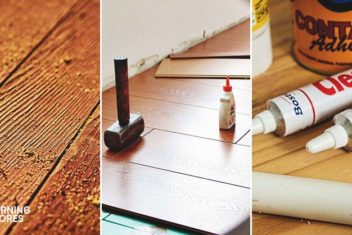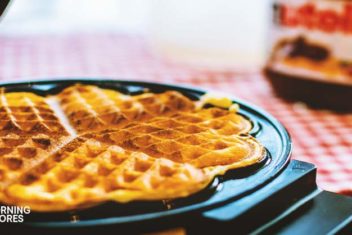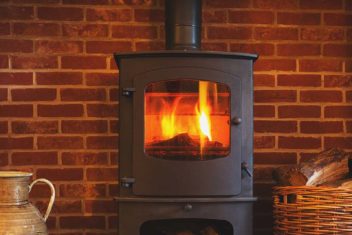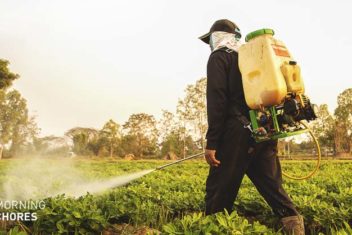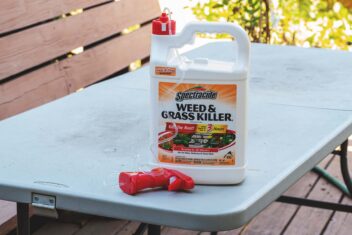A self-watering planter is the ideal gardening buddy for those gardeners who do not have the magical “green thumb”. Or do not have the time or space to organize and maintain a full garden.
If this is you and your gardening skills are well below par, or you live in an apartment or house that has minimal gardening space, a self-watering planter allows you to grow your own plants indoors or outdoors, while also making sure that your plants get the moisture they need to grow and flourish.
The 7 Best Self-Watering Planters
- Window Garden Aquaphoric Self-Watering Planter
- Bloem FBA Lucca Planter
- Lechuza Delta Self-Watering Garden Planter
- EarthBox Garden Kit (Our Top Pick)
- Mr. Stacky Self-Watering 3-Tier Stackable Garden Vertical Planter Set
- HowPlumb Self-Watering Flare Planter
- Mayne Fairfield Patio Planter
Our Top Pick for the Best Self-Watering Planter

Our top pick for the best self-watering planter is the EarthBox Garden Kit.
This sturdy and strong planter has plenty of room for you to grow your favorite plants. Also, as it is an all-in-one gardening kit, it has everything you need to start your own gardening hotspot. In addition to the planter box, EarthBox provides you with an aeration screen, a water fill tube, 2 b/w mulch covers, and there is a very handy overflow hole in case there is too much water in the reservoir.
The EarthBox is quite a compact planter, so it is the perfect choice for those gardeners who have limited gardening space. It also has castor wheels to make the planter box easy to move.
Check the price on Amazon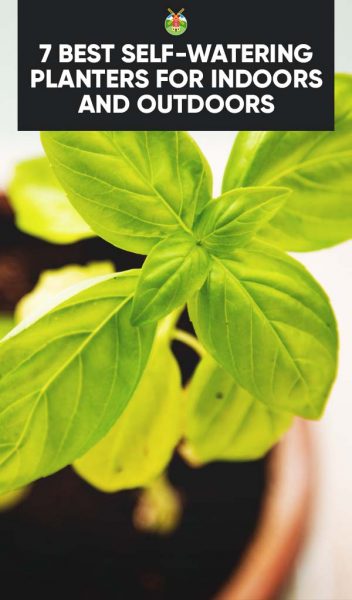
The Magic of Self-Watering Planters
Maintaining a garden can feel like a full-time job, especially if you live in a challenging dry or very humid climate. Besides sunlight and liquid fertilizer that encourages healthy growth from seed or seedling to full-grown plants, having the right amount of moisture is essential for a plant to thrive and bring forth flowers, fruit, or vegetables.
Once you have your plant firmly ensconced in the earth, there is weeding and cultivating to be done. This will ensure that the plant can continue to grow and produce in an ideal environment. Of course, all of this high maintenance is relatively easy for those people who have plenty of time to lavish some love on their plants. And also have plenty of room to produce their fruit and vegetables.
However, what happens if you work full time, or have a demanding and busy life? In addition to being “time poor”, you may live in an apartment that has limited space for a garden. So you have to keep your flowers or herbs in a brightly colored pot on a windowsill or display your favorite flowers on your patio.
Indoor gardening can also be a challenge when you plan to go on a vacation for a week or so. If there is no one to water your plants, your gardening dream can result in a plant massacre – you may return home to wilted, or in the worst-case scenario, brown, shriveled-up plants that can never be resurrected.
Whatever type of lifestyle you have or limited space that is available to you, or if you like to go on vacations regularly, these things do not have to limit your gardening passion or leave you with sad-looking or dead plants.
A self-watering planter can take a lot of the work out of watering. In hot, humid, and dry conditions, plants that are growing in ordinary containers can dry out faster than a normal garden bed. They may also require you to water them 2 or 3 times a day. Even if the container has a dish underneath that is full of water, the plant’s soil can still dry out quickly as well.
It can be quite disappointing to have a tomato plant or your favorite orchid die after not being water as required, even after a few days. Some plants are especially sensitive and may not like being watered too much like African Violets.
How A Self-Watering Planter Works
Self-watering planters help you to get your watering right as they contain a reservoir system or drip sub-irrigation system that delivers water to a plant throughout the day.
Most self-watering planters operate on a simple irrigation system. A hollow, plastic container rests at the bottom of the pot to create a reservoir that stores and catches excess water. The top of the platform has a separator or aeration screen that has small holes, (depending on the kind of planter you buy, you may have to drill the holes yourself).
This screen allows the plant’s roots to grow through the holes to take up the water, as well as letting the water drain from the plant’s soil into the reservoir.
Some self-watering planters also come with fitted water indicators that protrude from the top of the soil. These kinds of devices allow you to check the level of the water and when the plant’s reservoir needs to be topped up. Other simple self-watering planters have a quick viewing lip that juts out from the bottom reservoir, therefore allowing you to check the water level and add water as needed.
Once the water has been added to the reservoir, the water that is trapped under the separator feeds the water back to the soil through wicking, or “capillary action” which hydrates the growing soil when needed. This continual watering system gives your plant the life-sustaining moisture it needs to stay afresh and flourishing plant.
Aside from saving you time and freeing you up to do other things, self-watering planters can also save you money on your water bill as any water that is not used is stored away for later use.
Three Things to Remember Before You Use a Self-Watering Planter
- The self-watering function of the planter does not start to work until the plant’s root system is established. When you first put the plant into the soil and add some liquid fertilizer, add the water directly into the soil at the top of the pot or container. The moisture will flow through the plant and the reservoir will store it. At this stage of the plant’s life, you will need to monitor the water regularly. However, once the roots have grown into the separator, the roots will start to wick the moisture up into the plant.
- Self-watering planters are designed to give your plants an average amount or just enough moisture. However, they may not give the plant the exact amount of water. So your choice of planter will depend on your lifestyle. A small self-watering planter will suffice for a gardener who needs their plants to be watered during the day, while they are at work. However, if you are away from home a lot, or you like to travel, a planter that has a greater capacity to store water may be the ideal choice for you. Smaller planters may need monitoring at least once a week (depending on the indoor conditions or the climate). Larger planters can go up to 12 weeks before they need more water. Overall, the very handy watering system that a planter provides will give you back some of that precious time to spend relaxing. You can go to work knowing that you will not come home to a wilted plant.
- Self-watering planters are designed for standard garden vegetables, but annuals and many perennials also grow very well. Before you buy a self-watering planter, it is a good idea to check the plant’s soil or watering requirements before putting them into the planter. Some plants need dryer soil, while others may need wetter soil, so they may not be suitable for a planter.
How to Choose a Self-Watering Planter
Self-watering planters come in a range of sizes and designs. Some look like ordinary pots with a removable reservoir at the bottom and they may give you a choice of attractive colors. You might like a planter that has a contemporary design, with an elegant rectangular shape that can be placed on your window sill.
While others may have a square box shape, and are made of durable plastic. However, the wood-grain finish means you can have a planter that is both functional and stylish for your patio or decking.
Some planters come with very handy mulch covers that keep the soil chamber from losing moisture from the soil’s surface and also protect the added fertilizer from getting wet. If the fertilizer gets wet it may release too much fertilizer too quickly into the soil and burn the roots.
Tips for Using a Self-Watering Planter
- Some planters may have drainage holes as well as a removable reservoir. The drainage holes may be located at the bottom of the planter, while others may have them on the side. The drainage holes expel any excess water so that the plant’s roots will not get waterlogged and end up rotting. The best type of self-watering planter has drainage holes on the bottom
- If you choose this type of planter, elevate the planter on bricks or blocks of wood so that the water can escape. If you worry about the water leaking out onto the floor, use a medium to large-sized dish underneath. However, this may not be convenient as you have to empty it
- If your planter has a water indicator that protrudes out of the soil, it may get stuck awkwardly in the soil or get knocked over, especially if you are tending to the plant. If this happens the indicator may give you a false indication of the level of the water. So if this does happen, make sure that you check the indicator and press it firmly back into the soil.
7 Best Self-Watering Planters – Reviews
1. Window Garden Aquaphoric Self-Watering Planter
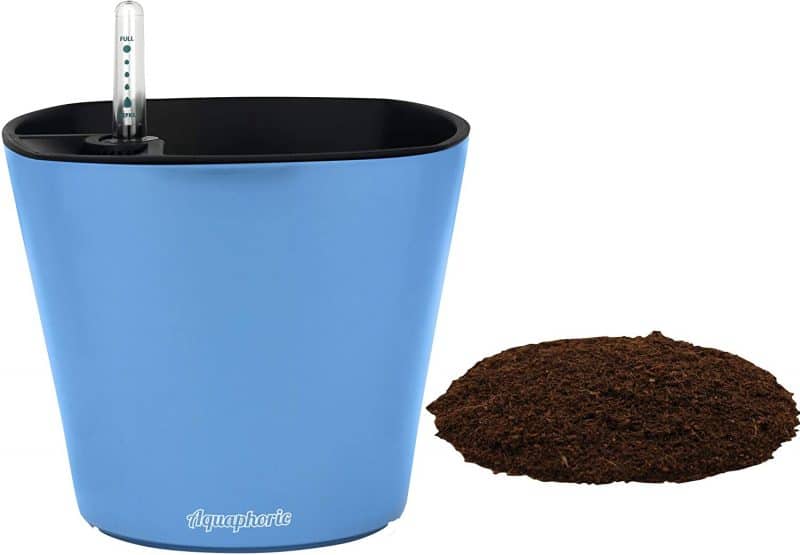
The Window Garden Aquaphoric Self-Watering Planter will provide your plants with the life-giving moisture they need to keep them happy and also vibrant. If you have trouble keeping your indoor plants alive like African violets or herbs, either from chronic overwatering or underwatering, this contemporary style planter has a very handy water level indicator that tells you how much water to add and when more water is needed.
As opposed to conventional planters that direct an intermittent flow of water to plants that can cause some plant stress, the Window Garden planter makes sure that there is a steady supply of water and nutrients so that your plants have the best chance to grow and flourish.
Window Garden also offers 2-quarts of high-quality Coco Peat fiber soil. So all you need to do is choose your plant or plants, add 2 cups of water, and maybe add some fertilizer, into the direct reservoir channel. Any excess water is stored in the built-in reservoir that is located under the plant.
In addition to the very stylish blue planter, you have a range of bright colors, so there are plenty of choices to suit your home décor.
Pros
- Very good value for money
- Very good quality planter
- Fitted water indicator
- Great modern design and also colors
- Easy to assemble
- Includes plant soil
Cons
- Small container
- Shallow water channel can overflow
2. Bloem FBA Lucca Planter
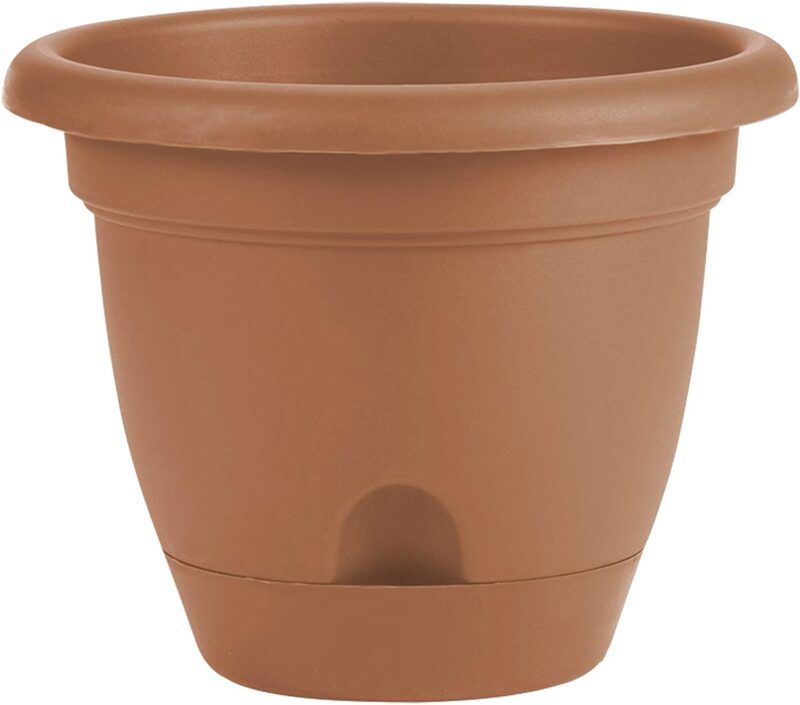
If you are looking for a sturdy and stylish self-watering planter that can be used indoors and outdoors, the Bloem FBA Lucca Planter is a great choice. The planter is manufactured in the US from 100% recyclable UV-stable blue plastic. So you can safely display your plants on your porch or the balcony of your apartment, without having to worry about the planter’s material fading in the sun.
The 12-inch planter comes with an attached reservoir that sits on a stable platform. There is a jutting out easy-viewing lip where you can add the water and also keep an eye on the water’s level. Depending on the type of plant or plants you are going to use in the planter, or the type of climate they are subject to, it will depend on how much water the planter will require. However, generally, the reservoir should only have to be refilled about once a week.
Pros
- Good value for money
- Strong recyclable UV plastic
- Sturdy platform
- Good self-watering system
- Attractive color
Cons
- Hard to pour water into the reservoir
- Not ideal for large plants
3. Lechuza Delta Self-Watering Garden Planter
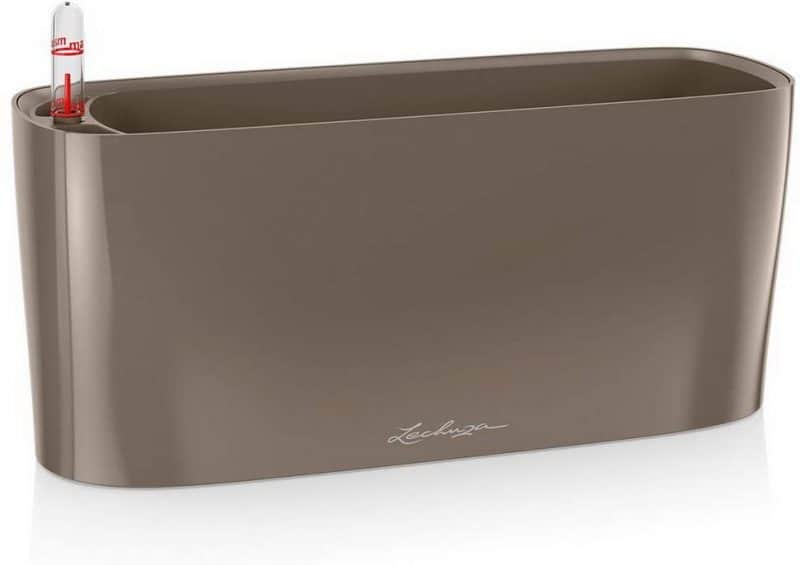
If you love growing orchids or herbs and want a “no mess and no fuss” approach to indoor gardening, the Lechuza Delta Self-Watering Garden Planter is a stylish and easy way to maintain and display your favorite houseplants. The planter can easily fit up to 3 plants, depending on their size.
The elegantly designed planter is made from strong, weather-resistant, and UV-resistant plastic. The beautiful matt finish will make an attractive addition to your home or apartment.
This innovative planter features a water-level indicator that lets you know when it is time to refill the reservoir. It also provides your plants with the amount of water they need for weeks, depending on the plant’s environment. If you need to go away on vacation this planter is perfect for you.
The very modern-looking planter features a self-watering, sub-irrigation system to carefully nourish your plant and encourage strong root growth. The included separator with aeration holes allows the plant’s roots to draw water from the reservoir. A supply shaft with a water level indicator runs along the inside edge of the liner, which makes it easy to add water and liquid fertilizer. As well as the planter, Lechuza includes a bag of potting medium to get you started on your gardening journey.
The Lechuza smart drainage system makes sure that your plant’s roots do not rot, as the specially made Lechuza-pon granules are to be put into the planter before the soil, on top of the separator, to make sure that the right amount of water is fed to the plant.
It is very easy to keep an eye on the water level as the handy water gauge shows you when the water reservoir is empty, which also prevents any accidental overwatering.
As well as the very stylish Taupe finish, the planter is also available in 5 colors: Charcoal Metallic, Espresso Metallic, Pastel Violet, Scarlet Red, and White. Lechuza also includes a bag of potting medium to help you start your gardening journey. The planter measures 4-inch wide x 5-inch deep x 5-inch high. And the planter has a good capacity.
Pros
- Stylish design
- Very good quality
- Beautiful matt finish
- Easy to set up and use
- Great self-watering sub-irrigation system
Cons
- Expensive
4. EarthBox Garden Kit

This compact EarthBox Garden Kit gives you everything you need to start an indoor garden. The planter is made from strong plastic and its terracotta color will make it an attractive addition to your house or apartment.
Whether you want to grow vegetables, herbs, or your favorite flowers, the planter box has a large capacity of 2-cubic feet. It is equipped with a water reservoir, a fill tube, and an overflow hole. What a great way to enjoy your plants stress-free.
EarthBox also provides step-by-step instructions that are easy to follow and in no time you will be proudly growing your new veggies like a professional. In addition to the planter box, the kit includes 2 black/white mulch covers, an aeration screen, a 1lb bag of organic Dolomite soil, a 1lb bag of fertilizer, and 4 castor wheels for easy portability. Some kits may have a bonus-free red mulch cover (where indicated on the package). The Earthbox planter is also available in green.
Pros
- Very good value for money
- Smart all-in-one self-watering planter
- Works very well for tomatoes and herbs
- Simple and easy to use
- Portable
- Attractive terracotta color
Cons
- Not ideal for large plants
- Uses a lot of water
5. Mr. Stacky Self-Watering 3-Tier Stackable Garden Vertical Planter Set
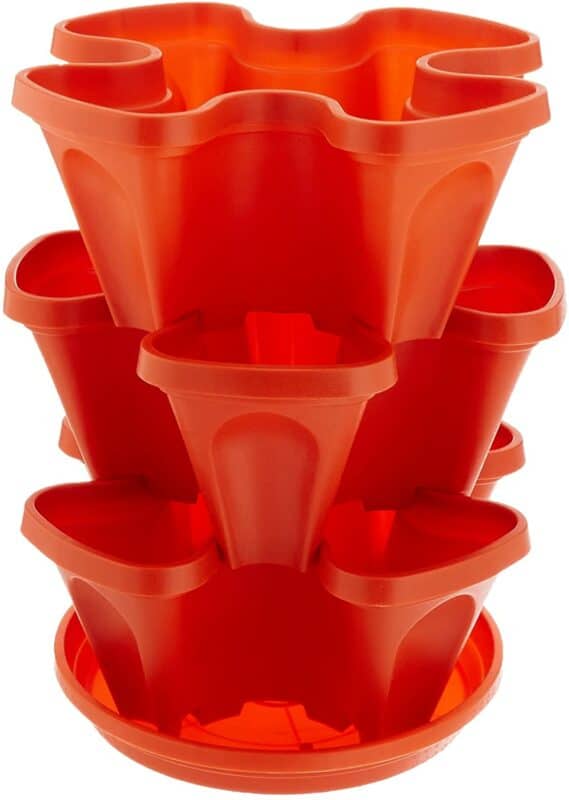
Mr. Stacky Self-Watering 3-Tier Stackable Garden Vertical Planter Set is not only a great space saver, but it also allows you to plant up to 12 plants such as strawberries, herbs, succulents, and you can even use it for hydroponics. The planter has a smart vertical design with 12 planting locations and 3 stacks that have their own water reservoirs on each layer and one 12-inch drip tray on the bottom of the planter.
Whether you want to conserve indoor or outdoor living space and still have a large range of plants, Mr. Stacky’s planter makes gardening easy. The planter is made out of strong UV-protected plastic. Its terracotta finish will make an attractive addition to your kitchen or patio, or wherever you choose to place it.
If you are going away for a few weeks, Mr. Stacky offers a conversion kit that includes a pump and timer for automatic watering. The planter has a center support pipe if you want to stack two units together.
Pros
- Well constructed planter
- Great space saver
- Unique vertical and stackable design
- Lightweight
- Can fit up to 12 plants
- Easy to assemble
- Can be used indoors or outdoors
Cons
- Drip tray is fragile
- Plants at the back of the planter may not get much sunlight
6. HowPlumb Self-Watering Flare Planter
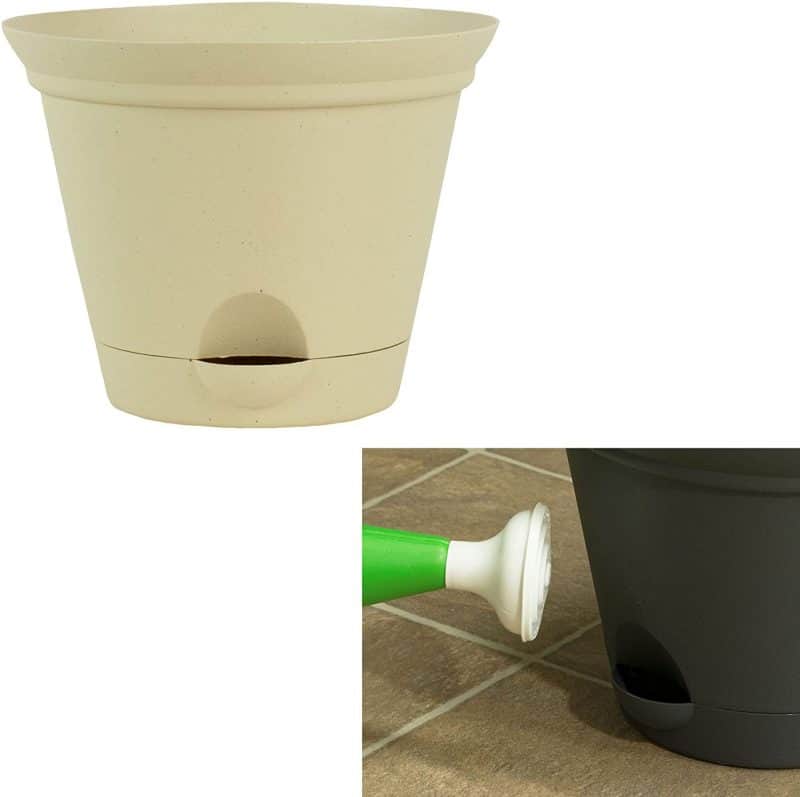
If you are looking for a smart-looking self-watering planter to display your flowers or herbs on your balcony or patio, the HowPlumb Self-Watering Flare Planter will keep your plants hydrated. The container comes in 3 stylish colors, flat gray, latte quartz, and salsa red, which will match any type of décor or outdoor environment.
This planter is made in the US from UV-resistant recycled plastic that is sturdy and durable and will not fade in the sun. It is deep enough to encourage strong root growth, which is essential to the plant’s long-term survival.
The planter includes a reservoir that feeds life-giving moisture to the plant’s roots as needed for up to 2 weeks. The quick view lip allows you to easily check the water’s level. Your plants will grow and flourish as the built-in ventilated base promotes optimal drainage and aeration.
Pros
- Affordable
- Built-in reservoir
- Easy to see viewing lip
- Ventilated base
- Three stylish colors
Cons
- Pots are smaller than advertised
- Can be difficult to pour water into the viewing lip
7. Mayne Fairfield Patio Planter
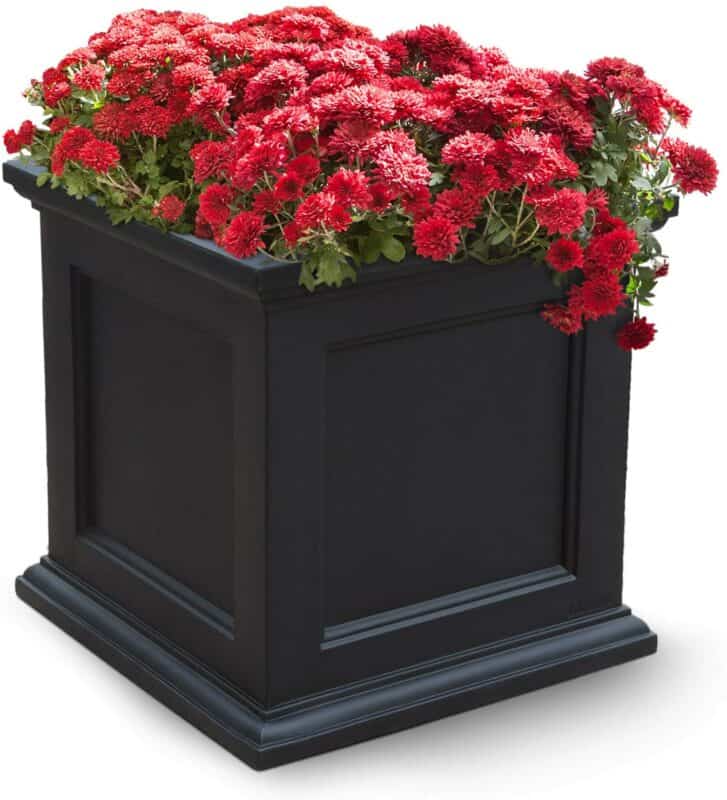
Mayne has combined functionality and a high level of sophistication to bring you this beautiful Patio Planter. This sturdy square-shaped patio planter offers you a substantial amount of growing space for your plants. Its New England design will add a touch of elegance to your outdoor living spaces.
The US-made eco-friendly planter is specially designed to be able to survive extreme weather conditions as its material is water, fade, and also insect resistant. It is made from high-grade polyethylene, with a double-wall design for added durability.
Even though it is made from thick plastic, the exterior is not shiny, and the authentic wood-style finish will make this planter a simply stunning addition to your patio or deck.
Mayne has designed this planter with an easy-to-use sub-irrigation watering system, with a built-in reservoir and drainage holes to provide hydration for healthy plant growth. The planter’s inside dimensions are 15.5-inch height x 15.5-inch width x 13-inch depth. It can hold approximately 9.5-gallons of soil, and the water capacity is approximately 8.75-gallons (33 l), so there is plenty of room for large plants.
The planter is easy to clean, just wash it over with a hose. Mayne also offers a very generous 15-year limited warranty. In addition to the classic black finish, the planter is available in White or Expresso, so you will be able to find a color to suit your home or apartment.
Pros
- Ideal for outdoor use
- Very good self-watering system
- Very good quality
- Lightweight
- Durable and sturdy construction
- Beautiful wood-style finish
- Spacious
- Easy to clean
Cons
- Expensive
Our Top Pick for the Best Self-Watering Planter

Our top pick for the best self-watering planter is the EarthBox Garden Kit.
This sturdy and strong planter has plenty of room for you to grow your favorite plants. Also, as it is an all-in-one gardening kit, it has everything you need to start your own gardening hotspot. In addition to the planter box, EarthBox provides you with an aeration screen, a water fill tube, 2 b/w mulch covers, and there is a very handy overflow hole in case there is too much water in the reservoir.
The EarthBox is quite a compact planter, so it is the perfect choice for those gardeners who have limited gardening space. It also has castor wheels to make the planter box easy to move.
Check the price on Amazon

